Subphylum Vertebrata Suborder Zoarcoidei Scientific name Pholis gunnellus Higher classification Pholis | Phylum Chordata Rank Species | |
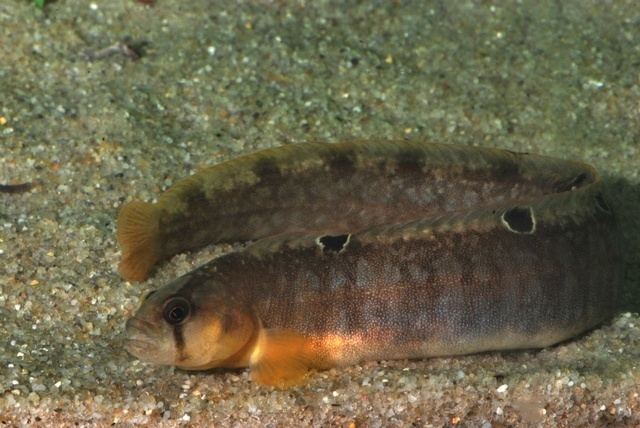 | ||
Similar Pholis, Pholidae, Taurulus bubalis, Spinachia spinachia, Viviparous eelpout | ||
Butterfish rock gunnel fish
The rock gunnel or Butterfish(Pholis gunnellus) is an eel-like fish found in the intertidal and subtidal zones of the North Atlantic. It is one of two species of gunnel native to the Atlantic Ocean, the other being the banded gunnel. The rock gunnel is capable of remaining above the waterline at low tide and breathing air.
Contents
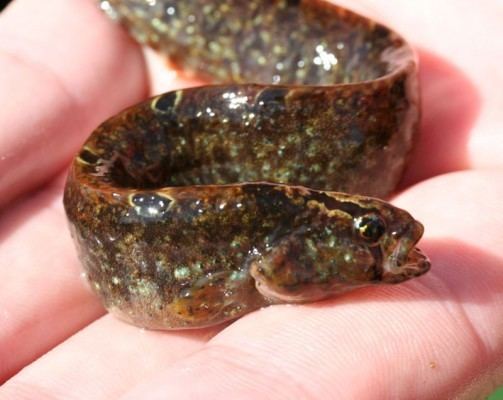
Butterfish rock gunnel fish
Physical characteristics
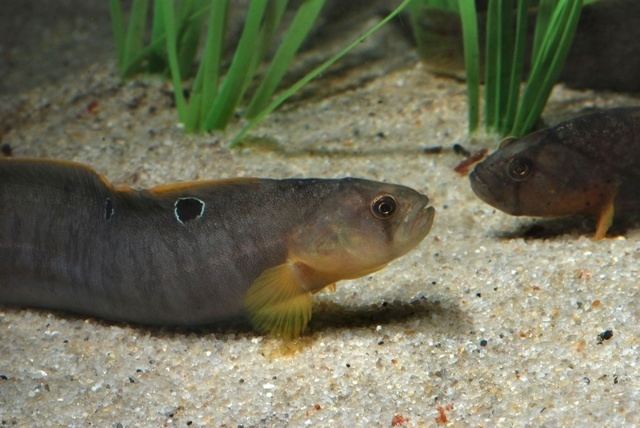
The rock gunnel is often mistaken for an eel due to its flattened, elongated body. Fully grown adults can reach 30 cm in length. A long dorsal fin spans the body from just behind the head, supported by soft spiny rays. Its anal fin begins roughly midway along the body. The head is rather small with its lower jaw protruding and mouth turned upwards. Coloration is highly variable, ranging from hues of yellow-green to brown to crimson. A row of 9-13 dark spots, each surrounded by a pale ring, lines the dorsal fin.
Habitat and distribution
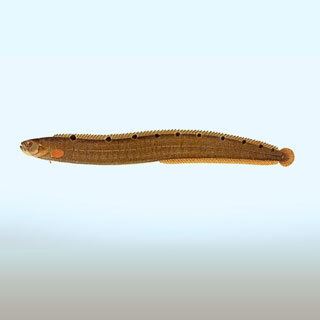
The rock gunnel is found in the coastal waters of North America and Europe. It ranges from Labrador and Greenland to Delaware Bay in the West Atlantic, and from the Kanin Peninsula to the Bay of Biscay in the East Atlantic. Within its range it is found from the intertidal zone to depths of over 100 m. The rock gunnel uses habitat sheltered by rocks and algae both above and below the waterline, likely to protect it from its natural predators, which include seabirds, fish, and marine mammals.
Behavior
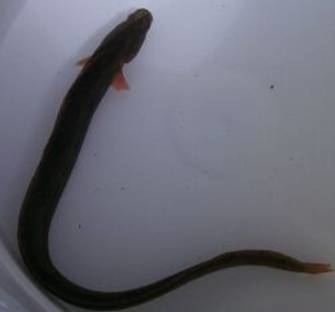
During low tides, the rock gunnel may remain above the waterline, sheltered beneath rocks and algae, and can breathe air if necessary. They are frequently encountered on rocky shorelines, and splash around noticeably when uncovered. Within its North American range, the rock gunnel disappears from the intertidal during winter, likely to avoid freezing air temperatures. Spawning occurs during the winter, and demersal egg masses are guarded by the parents. Egg masses sometimes occur in the intertidal along the European coast. The rock gunnel's diet consists mainly of small crustaceans, including amphipods and isopods, as well as polychaetes and mollusks. The foraging behavior of the rock gunnel is poorly understood.
